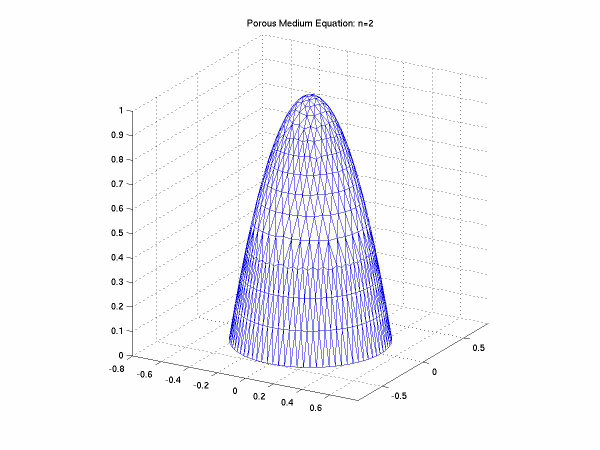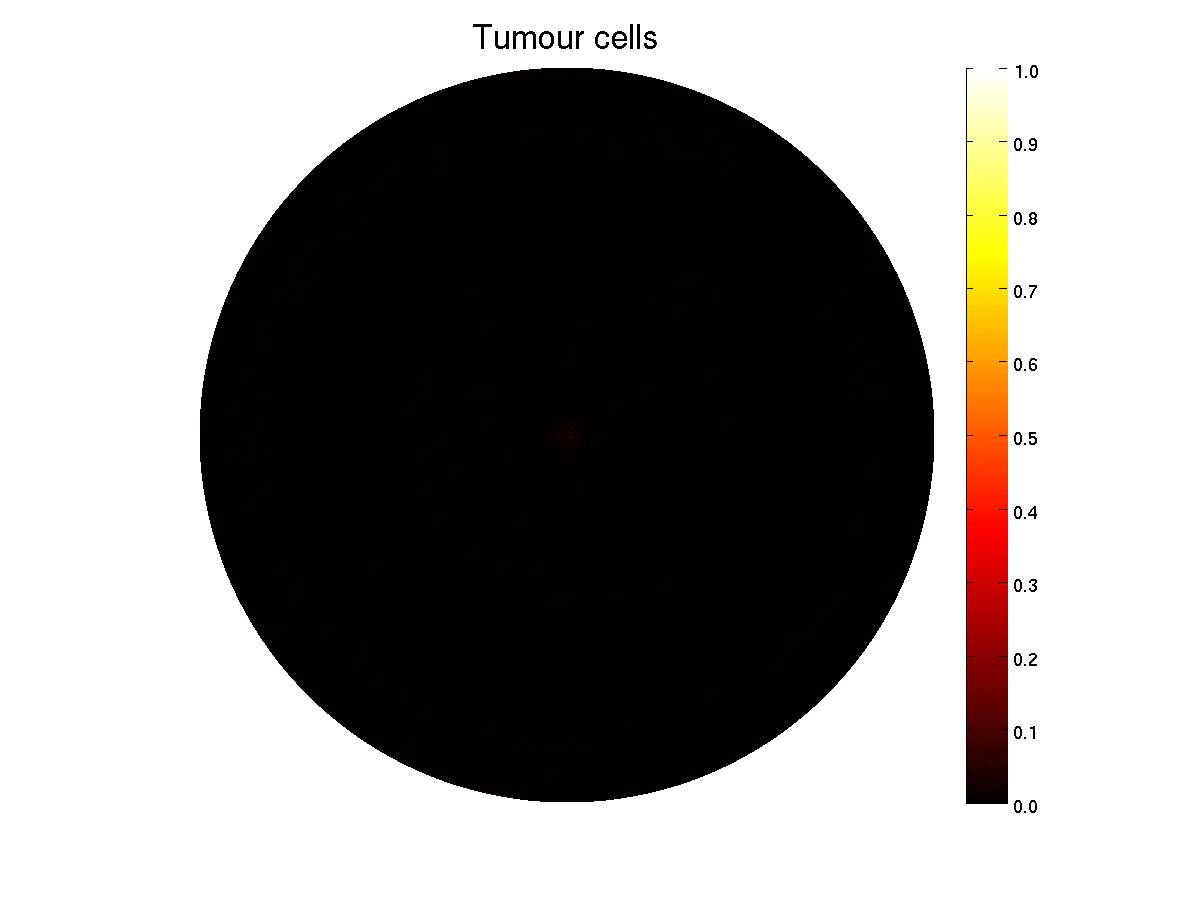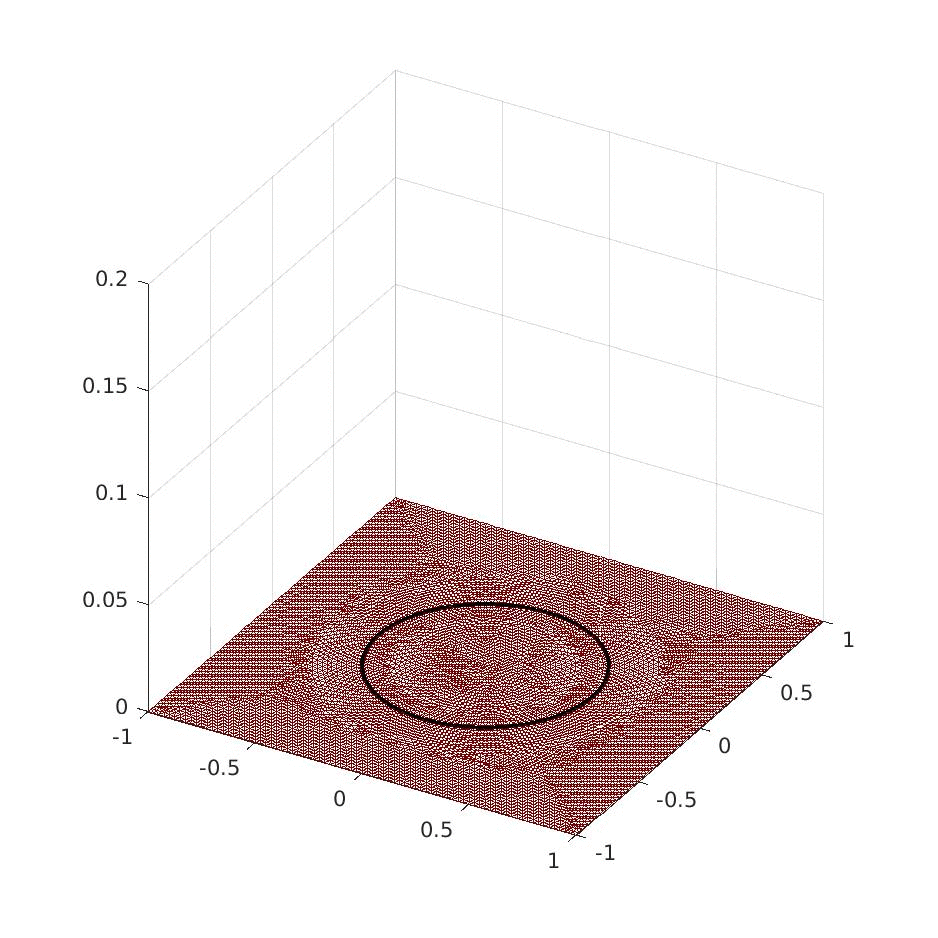Residual Distribution Algorithms for Time-Dependent Fluid Flow Problems
New computational algorithms are continually being developed for the simulation of fluid flow, whether they are to be used in modelling the effects of storms, predicting climate change or examining the flow of blood around the body. Many very robust algorithms already exist but although they readily produce plausible results for the most complex of situations it soon becomes apparent that they often misinterpret the underlying physical processes. This means that while rapidly increasing computer power can allow far more detailed modelling, the additional detail does not necessarily provide a more accurate representation of the flow.
Residual distribution algorithms have been deliberately designed to include genuinely multidimensional physical processes into the computational representation of the problem and they have been demonstrated to be significantly more accurate than the most popular schemes in current use. The reason why they are not more widely used is that they are less robust and less efficient, especially for time-dependent problems, and not as flexible.
This project aims to address these issues by developing faster, more robust generalisations of these methods to systems of nonlinear partial differential equations, paying particular attention to the approximation of time-dependent problems, higher order derivative terms and mesh adaptation. It will make use of a new, more adaptable, approach which allows for a discontinuous representation of the underlying flow variables. This opens up the possibility of developing new, fast, algorithms which combine the properties of positivity (ensuring that the simulation is free of unphysical oscillations) and high order accuracy.
- A.Warzynski, M.E.Hubbard, M.Ricchiuto, Runge-Kutta residual distribution schemes, J Sci Comput, 62(3):772-802, 2015. pdf
- D.Sármány, M.E.Hubbard, M.Ricchiuto, Unconditionally stable space-time discontinuous residual distribution for shallow-water flows, J Comput Phys, 253:86-113, 2013. pdf
- M.E.Hubbard, Discontinuous fluctuation distribution, J Comput Phys, 227(24):10125-10147, 2008. pdf
Discontinuous Galerkin Finite Elements for Moving Boundary Problems
Many physical and chemical processes, typified by those related to
fluid flow, can be modelled mathematically using partial differential
equations. These can usually only be solved in the simplest of situations,
but solutions in far more complex cases can be approximated using numerical
and computational techniques. Traditional approaches to providing these
computational simulations have typically modelled the evolution of the
system by approximating the equations on a uniform mesh of points covering
a domain with a fixed boundary. However, many situations (consider the
spreading of a droplet, for example), naturally suggest a domain which
 evolves with the flow, while the main focus of interest in others (say the
movement of a shock wave up and down an aeroplane wing) is in following
the motion of a sharp internal feature. For accuracy and efficiency a
computational method should not only approximate the partial differential
equations appropriately, but also move the computational mesh in a manner
which follows such features.
evolves with the flow, while the main focus of interest in others (say the
movement of a shock wave up and down an aeroplane wing) is in following
the motion of a sharp internal feature. For accuracy and efficiency a
computational method should not only approximate the partial differential
equations appropriately, but also move the computational mesh in a manner
which follows such features.
Recent research has developed a finite element approach to the adaptive approximation of time-dependent physical problems involving moving boundaries or interfaces. It has been deliberately designed to preserve inherent properties (such as conservation principles and invariances) of the underlying partial differential equations and hence of the system the mathematics is intended to represent. Extremely promising results have been obtained for a wide range of problems in one and two space dimensions, but the applicability of the approach is still limited (as are all moving mesh methods) by the potential for the computational mesh to ``tangle''.
The aim of this project will be to develop an alternative approach, derived within the same framework, which takes advantage of the additional flexibility inherent in the discontinuous Galerkin finite element framework. This has the potential to reduce the occurrence of mesh tangling and to greatly improve the robustness of the method when modelling problems involving complex, interacting features and when using different monitors to govern the movement of the mesh.
- M.J.Baines, M.E.Hubbard, P.K.Jimack, Velocity-based moving mesh methods for nonlinear partial differential equations, Commun Comput Phys, 10(3):509-576, 2011. pdf
- M.J.Baines, M.E.Hubbard, P.K.Jimack, R.Mahmood, A moving-mesh finite element method and its application to the numerical solution of phase-change problems, Commun Comput Phys, 6(3):595-624, 2009. pdf
- M.J.Baines, M.E.Hubbard, P.K.Jimack, A moving mesh finite element algorithm for the adaptive solution of time-dependent partial differential equations with moving boundaries, Appl Numer Math, 54:450-469, 2005. pdf
Fast Algorithms for Multiphase Models of Tumour Growth
Mathematical modelling and computational simulation are becoming important
tools for predicting tumour growth patterns and assessing the effectiveness
of therapeutic strategies. The mathematical models are becoming increasingly
complex and, despite the continuing rapid increase in the computational speed
 and available memory, biologically detailed, three-dimensional, simulations
over long timescales in realistic geometries remain out of reach on all but
the most powerful parallel machines.
and available memory, biologically detailed, three-dimensional, simulations
over long timescales in realistic geometries remain out of reach on all but
the most powerful parallel machines.
One current model of tumour growth assumes that, at a macroscopic level, each component of the tissue can be represented as a viscous fluid and the overall development of the tumour can be simulated as a coupled, multiphase, flow. The evolution of the ``flow'' is governed by a complex, coupled system of partial differential equations which, when discretised, lead to a large, sparse, linear system of equations which must be solved at each step as the simulation is advanced in time. Many algorithms exist for this purpose, but for problems of this scale it is most appropriate to consider an iterative approach. However, the aim is to run three-dimensional simulations on standard desk-top computers, and for this to be feasible convergence acceleration techniques are necessary.
Preconditioning, whereby a modified system, with improved convergence properties but the same solution, is solved, is a standard approach for accelerating the convergence of iterative solvers for linear systems of equations. The most commonly used preconditioners typically have a generic form and are designed to work reasonably well in a wide range of situations. However, in some cases, problem-specific, optimal preconditioners can be constructed which make use of the structure and properties of the underlying discretised system. In recent years such problem-specific preconditioners have been designed for simpler models of incompressible, viscous, fluid flow.
This project would develop and implement an optimal preconditioner for the three-dimensional, multiphase, viscous-flow models of tumour growth (and possibly other applications), providing an efficient solver which would allow the investigation of the model behaviour in complex biomedical systems.
- M.E.Hubbard, H.M.Byrne, Multiphase modelling of vascular tumour growth in two spatial dimensions, J Theoret Biol, 316:70-89, 2013. pdf
Multiscale Models for Growing Tissues: Simulation and Analysis
A fundamental barrier to advancing the understanding of biological tissue growth
lies in its inherently multiscale nature: interactions between processes acting at
disparate scales can profoundly influence the emergent dynamics. A unified
 description of such phenomena requires reconciling insight obtained by theoretical
or experimental study at one scale with observations at another. For example,
diseases that manifest at the organ scale often arise through the interaction of
microscopic events at the cellular scale; moreover, the resulting macroscale
changes influence the microscopic dynamics.
description of such phenomena requires reconciling insight obtained by theoretical
or experimental study at one scale with observations at another. For example,
diseases that manifest at the organ scale often arise through the interaction of
microscopic events at the cellular scale; moreover, the resulting macroscale
changes influence the microscopic dynamics.
This project builds on recent work in which a new description of the coupled growth, flow, transport and deformation of a porous material is derived. The model links explicitly the microscale dynamics with emergent tissue-level behaviour, and therefore provides significant computational challenges.
This project aims to develop new and efficient approaches with which to simulate and understand such models, exploiting the (multiscale) finite element method. Moreover, there is flexibility to engage in novel model development, or data integration (for example by comparison with results from experimental collaborators), depending on the student's background and interests. Results from this work will be of wide relevance to problems in, for example, tissue engineering, geophysics and industry.
This project will be in collaboration with Dr Reuben O'Dea of the School of Mathematical Sciences.
- J.Collis, D.L.Brown, M.E.Hubbard, R.D.O'Dea, Effective equations governing an active poroelastic medium, Proc R Soc A, 473:20160755, 2017. pdf